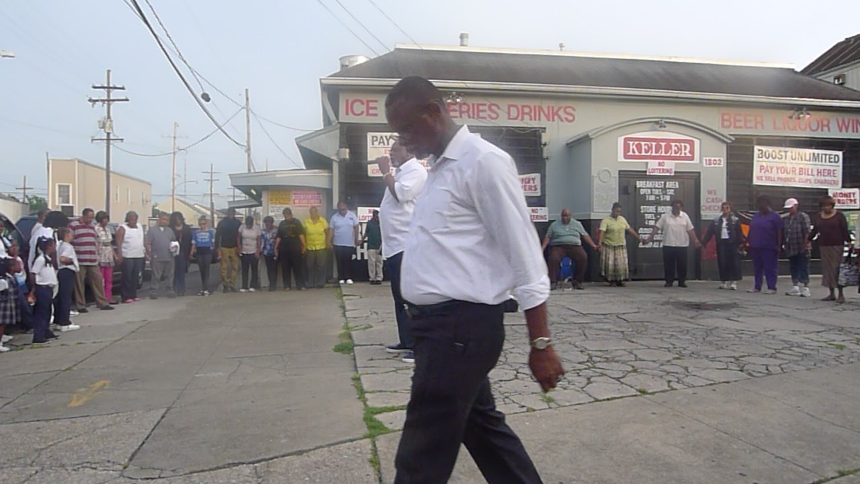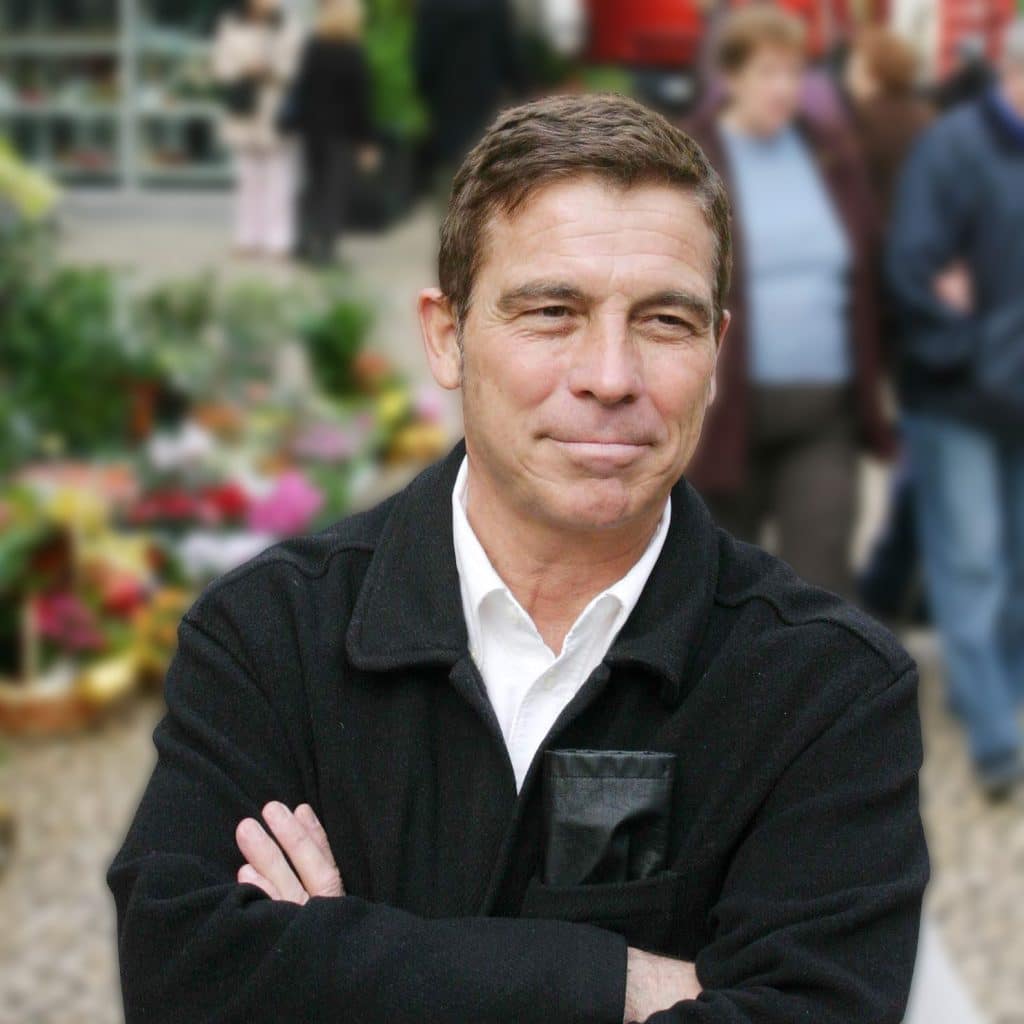Jill Bambury
University of Cambridge, Cambridge, UK
jeb82@cam.ac.uk
I was perplexed by the social and spatial stratification around issues of race, for which neither my education nor my upbringing had prepared me. At the same time, in the African American community, I was astounded by the orality and spirituality I encountered. Secretaries had bibles on their desks. Lawyers argued over the meaning of Biblical texts while exercising in the gymnasium. People walked and talked with God. They asked God questions. God told them things. They put things in God’s hands. Spirituality was present in everyday life, yet, there did not seem to be an architecture associated with it. Unraveling this paradox became the basis for my work.
Author’s field notes
‘even …. Pre-Emancipation African Americans cannot be said to be performing ‘race’ (read:’blackness’) ….. they are performing community, engaging in and (re)producing cultural forms and practices whose central function is community building and the production of terms by which African Americans come to identify themselves.’ Katherine Clay Bassard
This paper investigates a living model of spirituality in everyday life as exhibited through everyday practices in church communities in the heart of New Orleans. The setting was replete with violence, poverty and deterioration. Yet, through fieldwork comprised of meticulous repeated observation of daily activities in the seemingly unspectacular environment of an African American neighborhood in the inner city, a surprising revelation occurred.
Regardless of the variation in their original types, the churches of Central City New Orleans have a distinguishable architectural ‘sensibility’; a shared character as they relate to the neighbourhood. This sensibility is independent of type and style. It is articulated through the materials and features of the facades, but also through the treatment of the sites and the kind of care given to the ground itself. Despite the challenges, each church engaged in these meticulous caregiving quotidian rituals.
The church buildings in the study are not announced by bells or towers, hilltops, public squares or gardens.[1] They are not sited on prominent corner lots. Even the most prominent Central City churches, such as First African Baptist Church, are located mid-block. The buildings are oriented with fronts and entrances on the street but without front yards or landscaping features.[2] The buildings often have a vacant adjacent lot, surrounded by a four foot high chain linked fence. The fence may enclose a parking area but, more importantly, it guards the property and harnesses the lot to the adjacent building, thereby showing ownership. The side lots are not always paved and usually without gardens, but surfaced with manicured lawns. Without exception, the church sites are not elaborately designed.
Equally, without exception, the sites appear to be extremely well cared for and protected. Transcendental meaning seemed to be found in the physical interface between inhabitants and their church buildings, specifically in what might be considered the tedious tasks of mowing the grass and polishing the doorknobs and floors of the buildings. Tending to what might be considered as tedious tasks has been shown to be as important for the caregivers as for the buildings themselves. This phenomenon has been referred to by Karen Till as an ‘ethic of care’.
The meticulous care which is given to their sites is a feature that visually distinguishes the churches of Central City from the residential buildings which surround them.The neighboring houses are not always well kept; some have been damaged by fire or vandalism.[3] In further contrast to the relatively simple church front facades, often built of masonry, the houses have wooden fronts and ornamented porches, with carved roof finials, balustrades and window details.[4] Despite their simplicity, the respect given to the church entrance steps, the care given to the exterior yards and the unadorned fronts clearly differentiate the church buildings from their Central City neighbors. The distinction between the churches and the surrounding buildings is exacerbated by the conditions of the “hyperghetto”, wherein the churches are not only among the few non-residential buildings, but also among the few businesses that operate within the post-segregation neighborhood..[5]
Field observations provided one key to understanding the meaning of the very plain buildings which paradoxically were so important for the community and so well cared for. The quotidian characteristics were more important than ornamentation or architectural extravagance. The consistency of the layouts and character of the buildings supported the fact that the ‘everydayness’ overrode the other aspects of the buildings more usually concerned with excellent architecture. This discovery posed a challenge to the entire notion of sacred architecture.
In the churches under investigation, both the architectural forms and their associated everyday activities are the response to a search for collective identity, the answers to which are endemic to community building. Anthropologists and historians have shown that that despite the lack of freedom afforded them, enslaved persons built ‘a world’ for themselves, forging community life through the development of regular patterns of behavior. In these interstitial spaces known only to them, slaves met and communed.[6] Spatial patterns had similarly defined territories from slave cabins to work spaces indoors and out.
Through street preaching as well as through seasonal liturgical events such as church anniversaries, pastors’ anniversaries, mens’ picnics, musicals and springtime revivals the space of the church is physically delivered to the neighborhoods. The church is taken back to its place of origin in the street. The sacredness of the culture as exhibited in everyday life is evidenced by people who exit the church and enter the community to march and pray and convert others. In these rituals, congregants simultaneously walk in groups in the four cardinal directions, in the form of a cross, returning to join hands in a circle of prayer at the crossing point; an action that at times can occupy a vehicular intersection. The architectural formation clearly reconfigures some of the elements that Eliade claimed were universal to sacred space in the city: the marking of a place by the crossing, the crossing of cardinal axes; the imitation of mythical personae and events. Yet it also inhabits the form of everyday ritual. The activity has the characteristics of slave gatherings as well as more specific aspects of Christianity. ‘Christ never had a church!’ cried Bernard Jones who grew up in Central City. ‘He did all of his preaching in the neighbourhood!’
Karsten Harries elucidates Hegel’s claim in his statement that; “the highest function of art is not to entertain or to amuse, but to articulate a binding world view …… architecture is not merely a source of aesthetic delight, but invites a fuller response, because it shapes the time and space of lived experience.”[7] In other words, architecture does more than provide an image; it accommodates and represents its users, providing meaningful places for them in the world. The churches of Central City seem to share not only histories but also legible characteristics. These characteristics distinguish the buildings from the churches built by religious organizations of the ‘majority’ population and constitute their identity as ‘black churches’ that are clearly so central to their communities.8
The importance of community to the congregants is manifested in the immaculate maintenance of the buildings. This care giving extends into the neighborhoods in the forms of community service and of street preaching. The result is that these activities allow people to recover and retain what has been lost through changing forms of oppression.
References
Katherine Clay Bassard. Spiritual Interrogations: Culture, Gender, and Community in Early African American Women’s Writing (Princeton: Princeton University Press, 1999).
Stephanie Bruno. New Orleans Streets- A Walker’s Guide to Neighbourhood Architecture (Gretna, Louisiana: Pelican Publishing Company, 2010).
Mircea Eliade Eliade, Mircea. The Sacred and the Profane; the Nature of Religion. Translated from the French by Willard R.Trask (New York: Harcourt, 1959).
Eugene Genovese. Roll, Jordan, roll: the World the Slaves Made (New York: Pantheon Books, 1974).
Karsten Harries, Thoughts on a Non-arbitrary Architecture. Dwelling, Seeing, and Designing: Toward a Phenomenological Ecology. D. Seamon. Albany, State University of New York Press: 4160.1993).
Hubbard, Dolan The Souls of Black Folk : One Hundred Years Later (Columbia: University of Missouri Press, 2003).
John Michael Vlach, Back oif the Big House, the Architecture of Plantation Slavery (London, University of North Carolina Press. 1993).
Loic Wacquant. ‘A Janus-Faced Institution of Ethnoracial Closure: A Sociological Specification of the Ghetto.’ in Ray Hutchison and Bruce D. Haynes (eds.), THE GHETTO- Contemporary Global Issues and Controversies (Boulder: Westview Press, 2012).
[1] First African Baptist Church does have a tower which may have housed a bell at one point.
[2] This is contrary to symbolic west front entrances found in many Christian churches. A west front places the altar at the east end of the building, behind which the sun rises. See Male (1961) for a discussion of the symbolic in Gothic Cathedrals.
[3] The 2010 US Census indicates that many of the houses are rental properties. Some houses have not been reoccupied since Hurricane Katrina and have fallen into either neglect or misuse or both.
[4] See Bruno (2010).
[5] See Wacquant (2012) for discussion of the ‘hyperghetto’.
[6] See Genovese (1974) and Vlach ().
[7] Harries (1993), 51. 8 This became clear when students at Southern University School of Architecture in Louisiana were instructed to locate the African American churches in the city of Baton Rouge, Louisiana for fieldwork in a class I taught in 2007.




